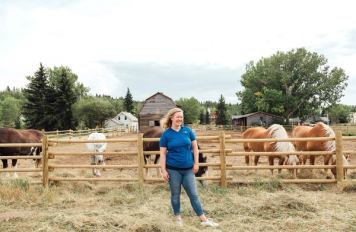When Jim Heaton visited Heritage Park as a young boy in 1964, the year the park opened, he never imagined that he would someday work there as a Public Programming Specialist. And he never would have guessed how rewarding the job would be. Heaton works to develop interpretive programs for the park and trains volunteers.
There are many things that Heaton appreciates about his job. Discovering and sharing fun facts about artifacts in the Heritage Park collection is particularly rewarding. For example, he enjoys showing people the 1936 Cord 810 in the Gasoline Alley Museum, because it was aviation pioneer Amelia Earhart’s favourite car.
“I love working with the public and watching their faces when they learn something new,” says Heaton, who has been working at Heritage Park since 2006. “The people here are amazing and our volunteers are truly remarkable. We have over 400 volunteers in our volunteer ambassador program.”
Working at a living history museum during a pandemic has had its challenges, but Heaton and other staff have helped Heritage Park evolve to meet and exceed ever-changing health guidelines.
“On the positive note, I haven’t had a cold in a year-and-a-half,” Heaton says with a laugh. “The park is very well sanitized. We have instituted separate entrances and exits for our heritage buildings, and our costuming department has been hard at work making sure that our park ambassadors have masks that match their outfits.”
Staff at the park plan to continue wearing masks even after provincial guidelines ease – at least until they are certain that guests and staff members are feeling safe.
Looking to the future
Growing and changing over the years makes the park interesting, even for visitors who have been there many times before.




